Dojo loach - Misgurnus anguillicaudatus
Scientific name: Misgurnus anguillicaudatus
Common name: Dojo loach
Family: Cobitidae
Usual size in fish tanks: 20 - 25 cm (7.87 - 9.84 inch)
014
Recommended pH range: 6.5 - 7.5
Recommended water hardness: 2 - 12°N (35.71 - 214.29ppm)
0°C 32°F30°C 86°F
Recommended temperature range: 18 - 23 °C (64.4 - 73.4°F)
The way how these fish reproduce: Spawning
Where the species comes from: East Asia
Temperament to its own species: peaceful
Temperament toward other fish species: aggressive to smaller
Usual place in the tank: Bottom levels
General Information
The Dojo (Weather/Pond) Loach (Misgurnus anguillicaudatus) is a hardy, eel-shaped cobitid native to East Asia (Amur Basin to Japan/Korea/Taiwan, south to Vietnam and Myanmar) and widely introduced elsewhere. In nature it inhabits slow rivers, ponds, swamps and rice fields with muddy or sandy bottoms and abundant vegetation. A facultative air-breather and expert burrower, it spends much time near or in the substrate and can exceed 20 cm (8″) in aquaria, larger in the wild.
Food and Feeding
An opportunistic omnivore with a strong preference for benthic invertebrates. Offer sinking pellets/sticks as staple and rotate live or frozen foods (blackworms, bloodworms, daphnia, chopped earthworms, brine shrimp). Supplement with blanched vegetables or spirulina wafers as needed. Feed at lights-out or in dim light so slower, methodical feeding isn’t outcompeted. Remove leftovers to protect water quality.
Sexing
Males have enlarged, triangular pectoral fins (thickened second ray) visible from above; females are fuller-bodied—especially when gravid.
Breeding
Egg-scattering spawner; consistent home-aquarium breeding is rare. In aquaculture it responds to seasonal cues (cooling/warming, rising photoperiod) and, in some cases, hormone induction. If attempting naturally, use a large, heavily planted tank with fine-leaf cover/spawning mops, simulate seasonal cooling then gradual warming, and protect adhesive eggs from the adults. Start fry on infusoria, then newly hatched brine shrimp.
Lifespan
Commonly 7–10 years in cool, clean, well-oxygenated systems; longer is possible with excellent care.
Tank Requirements & Water Parameters
- Temperature: best at 18–23 °C (64–74 °F); tolerates 5–25 °C short-term. Sustained >25 °C increases stress—keep it on the cool side.
- pH: 6.5–7.5 (tolerant 6–8 if stable); Hardness: soft to medium (≈ 2–12 °dH).
- Footprint & size: active, sizeable bottom dweller; plan for a group in a ≥ 120 cm (48″) tank (≈55 gal) with robust biofiltration and high oxygenation.
- Substrate: fine sand (essential) to prevent barbel/skin damage and allow natural burrowing; add rounded stones, wood, leaf litter and plants for cover.
- Flow & maintenance: gentle–moderate flow; weekly 25–35% water changes; tight-fitting lid (escape artist). Avoid copper/formalin-heavy meds—this is a scaleless loach.
Compatibility & Tank Mates
Generally peaceful and social; keep in groups of ≥3–5 for confidence. Suitable with calm, medium-sized fish that won’t nip barbels or outcompete at feeding. Very small fish or shrimp fry may be eaten opportunistically. Avoid aggressive cichlids and fin-nippers.
Behaviour & Usual Place in the Tank
Bottom levels (demersal): forages along and within the substrate, often becoming more active at dusk/night. Sensitive to barometric pressure changes (“weather fish”), which can trigger bursts of activity—ensure décor is secure.
Short Description
Dojo/Weather Loach (Misgurnus anguillicaudatus) is a hardy, cool-water burrower from East Asia. Keep on sand in a well-oxygenated, covered aquarium, feed sinking foods with meaty supplements, and house in groups for natural behavior. Breeding in home tanks is uncommon.
Q&A
- Warm or cool water? Cool–temperate is best (≈18–23 °C); prolonged warmth >25 °C is stressful.
- Will it uproot plants? It burrows and may disturb shallow roots; use robust plants/epiphytes on wood/rock.
- Sand vs gravel? Always choose fine sand—sharp gravel damages barbels and skin.
Pictures
Thanks to L. Staunton!
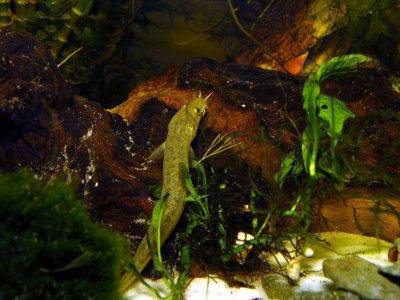



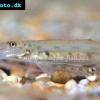 Horseface
Horseface  Horseface
Horseface 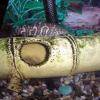 YoYo
YoYo 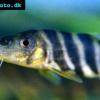 Bengal
Bengal 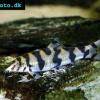 Burmese
Burmese  Myanmar
Myanmar 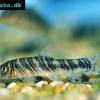 Zebra
Zebra 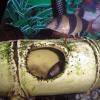 Clown
Clown 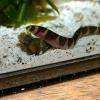 Kuhli
Kuhli 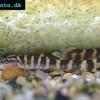 Loach
Loach 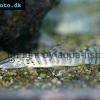 Tiger
Tiger 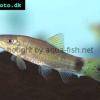 Tailspot
Tailspot 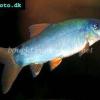 Blue
Blue